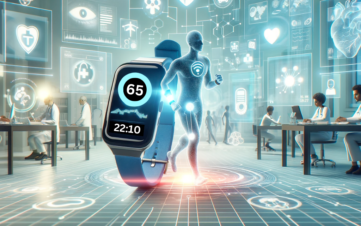The Internet of Things (IoT) has quickly become an indispensable resource for organizations and consumers alike, facilitating the gathering of massive amounts of data and the automation of many tasks. The sustainability and management of energy resources is one area where IoT shows great promise. IoT devices and systems provide for improved energy monitoring and control, waste minimization, and greener business practices.
Adopting sustainable practices and technologies is crucial now more than ever as we continue to face critical global concerns like climate change and energy shortage. IoT is one such technology with the potential to have a huge impact on energy management and sustainability. In this article, we’ll look at the important role that the Internet of Things can play in achieving long-term energy efficiency and sustainability goals.
Energy Efficiency and Optimization
One of the primary ways IoT can contribute to energy management and sustainability is through energy efficiency and optimization. By using sensors and connected devices, IoT can provide real-time data on energy usage, allowing companies and individuals to identify areas of inefficiency and make data-driven decisions to optimize their energy consumption. For example, smart thermostats can learn user behavior and adjust temperature settings accordingly, reducing energy waste and costs. Similarly, smart lighting systems can automatically turn off lights in unoccupied areas, saving energy and reducing carbon emissions.
Smart Grid Management
The control of smart grids is another important use for the IoT. The grid is able to collect real-time data on energy consumption and production thanks to the use of sensors and connected devices. This enables the grid to distribute and manage energy in a more effective manner. IoT can be used to, among other things, forecast demand and alter energy supply accordingly, which can cut energy waste and associated costs. The management of smart grids can also make it possible to integrate renewable energy sources, which makes it simpler to deal with the variations and intermittent nature of various sources of energy.

Renewable Energy Integration
Another significant way IoT can contribute to sustainability is by enabling the integration of renewable energy sources. With the growth of renewable energy, such as solar and wind power, IoT can play a critical role in managing the fluctuations and intermittency of these sources. By using IoT devices to monitor energy production and consumption, companies and individuals can adjust their energy usage to align with renewable energy generation, reducing reliance on non-renewable sources and contributing to a more sustainable future.
Energy Monitoring and Analytics
In addition to optimization, smart grid management and renewable energy integration, IoT can also be used to monitor energy usage and provide valuable analytics. By collecting data on energy consumption patterns, organizations can identify areas where energy usage can be reduced and develop more effective sustainability strategies. This can include everything from identifying inefficient appliances and systems to pinpointing areas where energy waste is particularly high.
Predictive Maintenance
IoT can also contribute to energy management and sustainability through predictive maintenance. By using sensors and data analytics, IoT devices can monitor equipment and identify potential issues before they become significant problems. This can help reduce downtime and extend the lifespan of equipment, reducing the need for replacement and saving resources. Predictive maintenance can also reduce energy waste by ensuring that equipment is operating efficiently, further contributing to sustainability efforts.
Demand Response
Finally, IoT can play a critical role in demand response, allowing for more efficient and sustainable management of energy consumption during peak demand periods. By using connected devices and real-time data, companies and individuals can adjust their energy usage during peak periods, reducing the strain on the grid and avoiding the need for additional energy production. This can help reduce carbon emissions and contribute to a more sustainable energy system overall.
Conclusion
In conclusion, IoT has the potential to improve energy management and sustainability through some attempts such as energy efficiency and optimization, renewable energy integration, and smart grid management. By making data-driven decisions and managing energy consumption more efficiently, IoT can help us achieve sustainable energy practices. With IoT technology constantly evolving and becoming more sophisticated, it is poised to play an increasingly important role in sustainability. Continued innovation and exploration of new uses for IoT devices and systems can contribute towards a cleaner, more sustainable future.










